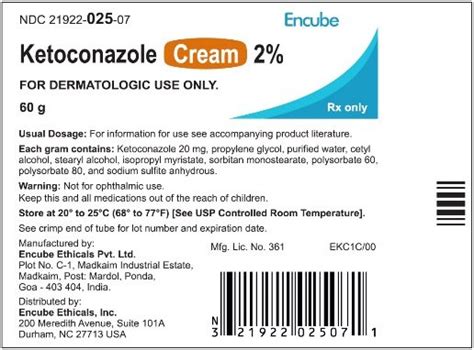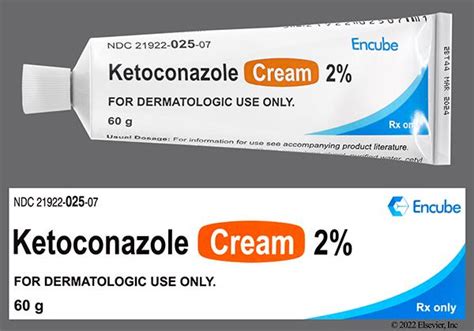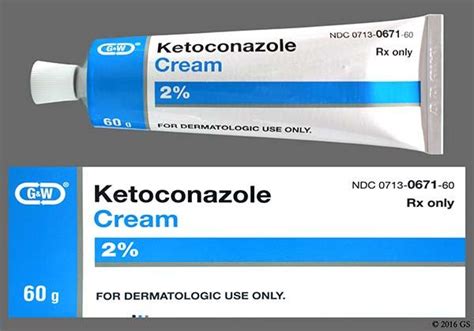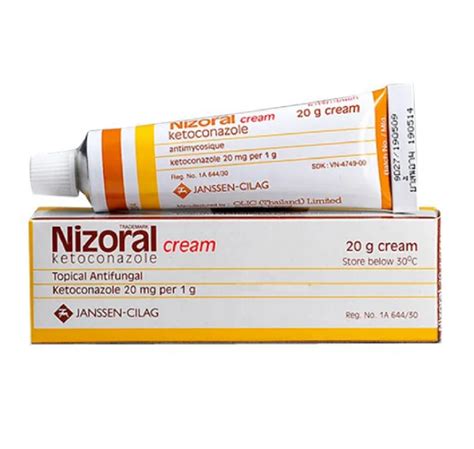Intro
Discover the versatile uses of Ketoconazole Cream, a powerful antifungal treatment for various skin conditions. Learn how it combats fungal infections, soothes skin irritations, and treats conditions like ringworm, athletes foot, and seborrheic dermatitis. Explore its benefits, applications, and potential side effects to get the most out of this effective topical cream.
Ketoconazole cream is a topical antifungal medication that has been widely used for the treatment of various fungal infections. It is a synthetic imidazole antifungal agent that works by inhibiting the synthesis of ergosterol, a critical component of fungal cell membranes. This leads to the disruption of cell membrane function, ultimately resulting in the death of fungal cells.
The importance of ketoconazole cream lies in its ability to effectively treat a range of fungal infections that can cause discomfort, pain, and embarrassment. Fungal infections can affect anyone, regardless of age or background, and can have a significant impact on a person's quality of life. With the use of ketoconazole cream, individuals can quickly and effectively treat fungal infections, reducing the risk of complications and promoting healthy skin.
One of the key benefits of ketoconazole cream is its broad-spectrum antifungal activity. It is effective against a wide range of fungal species, including dermatophytes, yeasts, and molds. This makes it a versatile treatment option for various fungal infections, including ringworm, athlete's foot, and fungal infections of the skin and nails.

How Does Ketoconazole Cream Work?
Ketoconazole cream works by inhibiting the synthesis of ergosterol, a critical component of fungal cell membranes. Ergosterol is essential for maintaining the integrity of fungal cell membranes, and its depletion leads to the disruption of cell membrane function. This ultimately results in the death of fungal cells.
When applied topically, ketoconazole cream is absorbed into the skin, where it targets fungal cells. The cream forms a reservoir of ketoconazole in the skin, allowing for prolonged release of the medication. This ensures that the fungal infection is treated effectively, reducing the risk of recurrence.
Benefits of Ketoconazole Cream
The benefits of ketoconazole cream include:
- Broad-spectrum antifungal activity against a range of fungal species
- Effective treatment of various fungal infections, including ringworm, athlete's foot, and fungal infections of the skin and nails
- Quick and easy to apply
- Minimal side effects
- Available over-the-counter (OTC) and by prescription

Common Uses of Ketoconazole Cream
Ketoconazole cream is commonly used to treat various fungal infections, including:
- Ringworm (tinea corporis): a fungal infection of the skin that causes a ring-shaped rash
- Athlete's foot (tinea pedis): a fungal infection of the feet that causes itching, burning, and cracking
- Fungal infections of the skin and nails (tinea versicolor): a fungal infection that causes discoloration and scaling of the skin and nails
- Seborrheic dermatitis: a skin condition that causes inflammation and flaking of the skin
- Dandruff (pityriasis simplex): a skin condition that causes flaking of the scalp
Precautions and Side Effects
While ketoconazole cream is generally safe and effective, there are some precautions and side effects to be aware of. These include:
- Allergic reactions: some individuals may be allergic to ketoconazole cream, which can cause redness, itching, and swelling
- Skin irritation: ketoconazole cream can cause skin irritation, including burning, stinging, and redness
- Dry skin: ketoconazole cream can cause dry skin, especially if used for prolonged periods

How to Use Ketoconazole Cream
To use ketoconazole cream effectively, follow these steps:
- Wash the affected area with soap and water.
- Dry the area thoroughly.
- Apply a thin layer of ketoconazole cream to the affected area.
- Gently massage the cream into the skin.
- Leave the cream on for the recommended amount of time (usually 2-4 weeks).
- Repeat the application as directed.
Tips for Using Ketoconazole Cream
Here are some tips for using ketoconazole cream:
- Use ketoconazole cream as directed by your doctor or pharmacist.
- Apply ketoconazole cream to the affected area only.
- Avoid applying ketoconazole cream to broken or irritated skin.
- Wash your hands thoroughly after applying ketoconazole cream.

Conclusion
Ketoconazole cream is a safe and effective treatment for various fungal infections. Its broad-spectrum antifungal activity and ease of use make it a popular choice for individuals looking to treat fungal infections. By following the recommended usage and precautions, individuals can quickly and effectively treat fungal infections, promoting healthy skin and reducing the risk of complications.

What is ketoconazole cream used for?
+Ketoconazole cream is used to treat various fungal infections, including ringworm, athlete's foot, and fungal infections of the skin and nails.
How does ketoconazole cream work?
+Ketoconazole cream works by inhibiting the synthesis of ergosterol, a critical component of fungal cell membranes.
What are the common side effects of ketoconazole cream?
+The common side effects of ketoconazole cream include allergic reactions, skin irritation, and dry skin.
